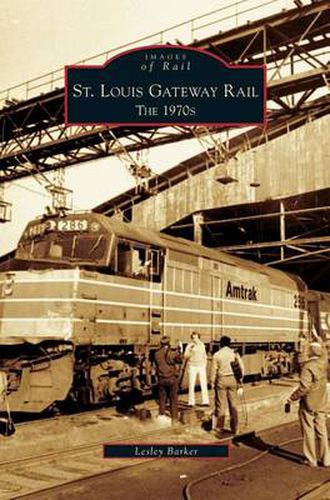Readings Newsletter
Become a Readings Member to make your shopping experience even easier.
Sign in or sign up for free!
You’re not far away from qualifying for FREE standard shipping within Australia
You’ve qualified for FREE standard shipping within Australia
The cart is loading…






This title is printed to order. This book may have been self-published. If so, we cannot guarantee the quality of the content. In the main most books will have gone through the editing process however some may not. We therefore suggest that you be aware of this before ordering this book. If in doubt check either the author or publisher’s details as we are unable to accept any returns unless they are faulty. Please contact us if you have any questions.
Though the city of St. Louis is located on the Missouri side of the Mississippi River, for the railroads, the St. Louis Gateway extends into Illinois, north and south along both sides of the river. Two factors conspired against St. Louis’s aspiration to become the preeminent rail center of the 19th-century American Midwest: there was no bridge across the Mississippi, and Missouri’s loyalty to the Union during the Civil War was suspect. Chicago beat out St. Louis to attain the region’s top railroad billing. Fast forward to the 1970s, when the Gateway Arch, dedicated in 1968, redefined the St. Louis riverfront and when the St. Louis Union Station closed to rail service. The 1970s was a decade of railroad debuts–Burlington Northern, Illinois Central Gulf, Family Lines–and a decade of railroad demises–Rock Island and Frisco. It signaled the end of a century of rail domination of the American transportation scene.
$9.00 standard shipping within Australia
FREE standard shipping within Australia for orders over $100.00
Express & International shipping calculated at checkout
This title is printed to order. This book may have been self-published. If so, we cannot guarantee the quality of the content. In the main most books will have gone through the editing process however some may not. We therefore suggest that you be aware of this before ordering this book. If in doubt check either the author or publisher’s details as we are unable to accept any returns unless they are faulty. Please contact us if you have any questions.
Though the city of St. Louis is located on the Missouri side of the Mississippi River, for the railroads, the St. Louis Gateway extends into Illinois, north and south along both sides of the river. Two factors conspired against St. Louis’s aspiration to become the preeminent rail center of the 19th-century American Midwest: there was no bridge across the Mississippi, and Missouri’s loyalty to the Union during the Civil War was suspect. Chicago beat out St. Louis to attain the region’s top railroad billing. Fast forward to the 1970s, when the Gateway Arch, dedicated in 1968, redefined the St. Louis riverfront and when the St. Louis Union Station closed to rail service. The 1970s was a decade of railroad debuts–Burlington Northern, Illinois Central Gulf, Family Lines–and a decade of railroad demises–Rock Island and Frisco. It signaled the end of a century of rail domination of the American transportation scene.